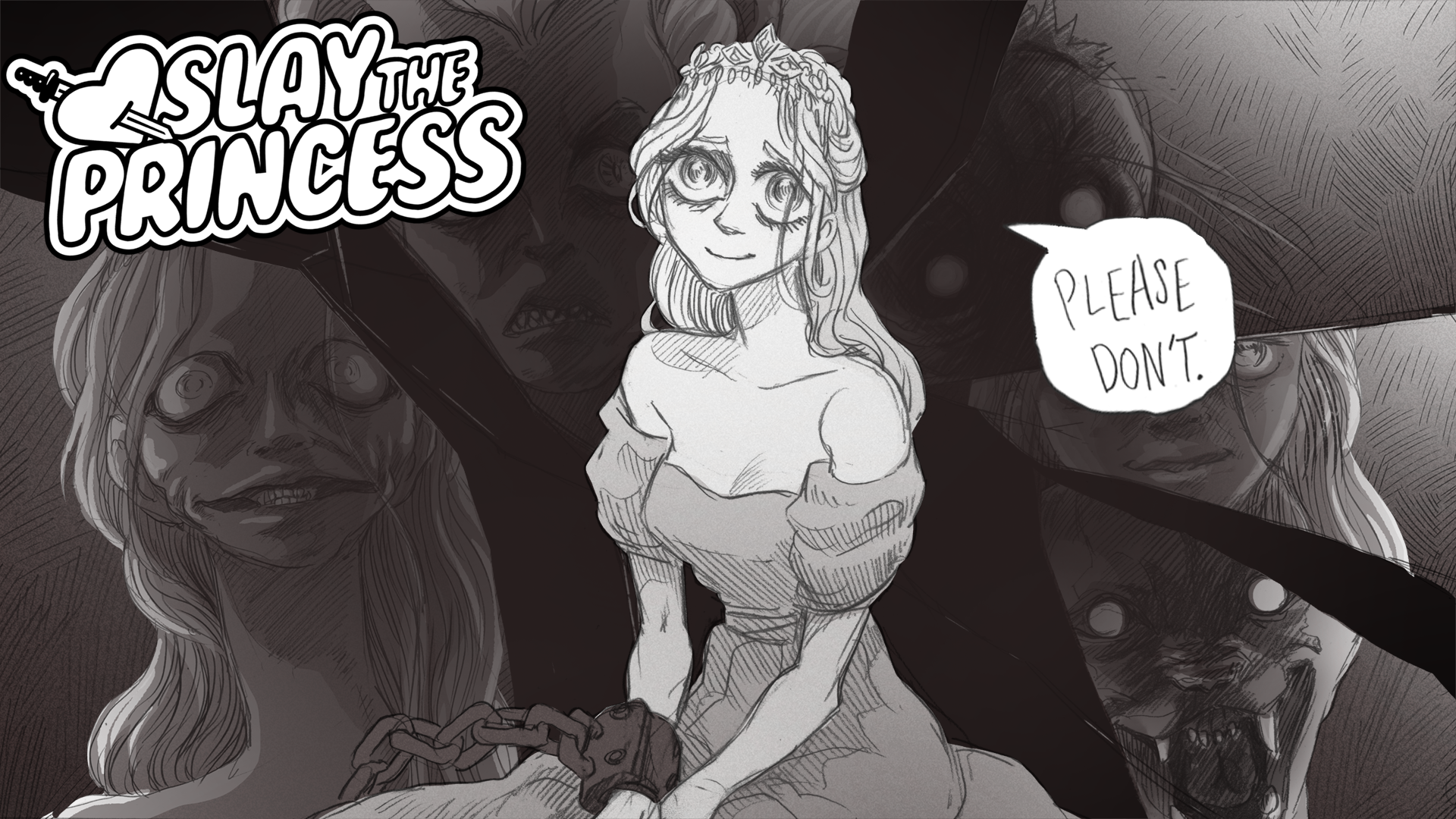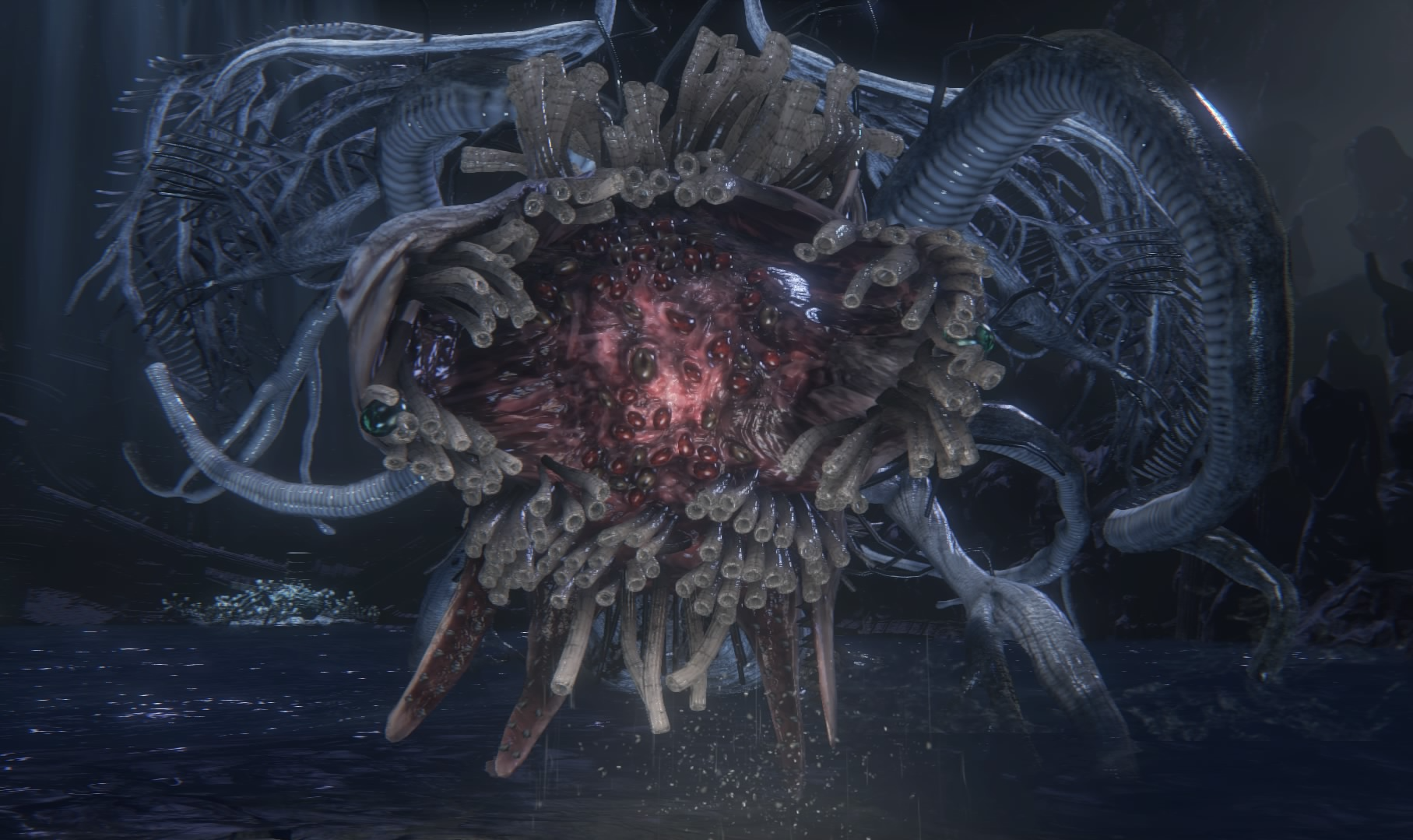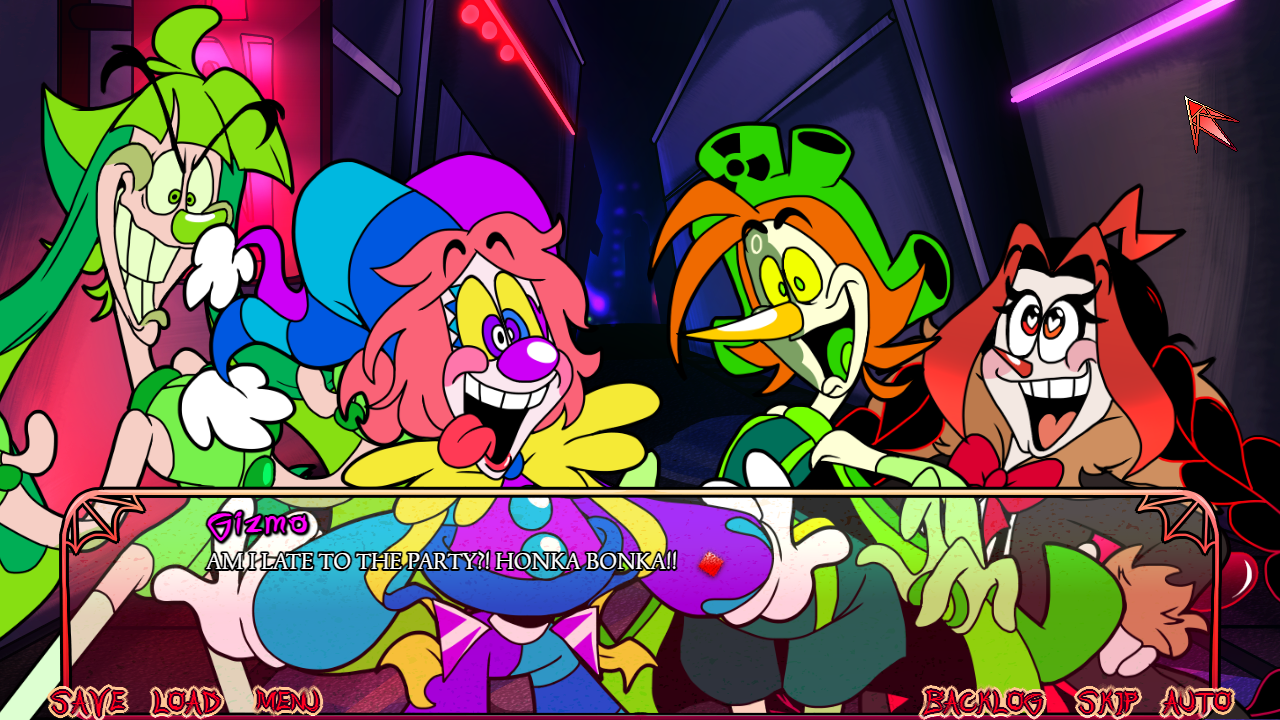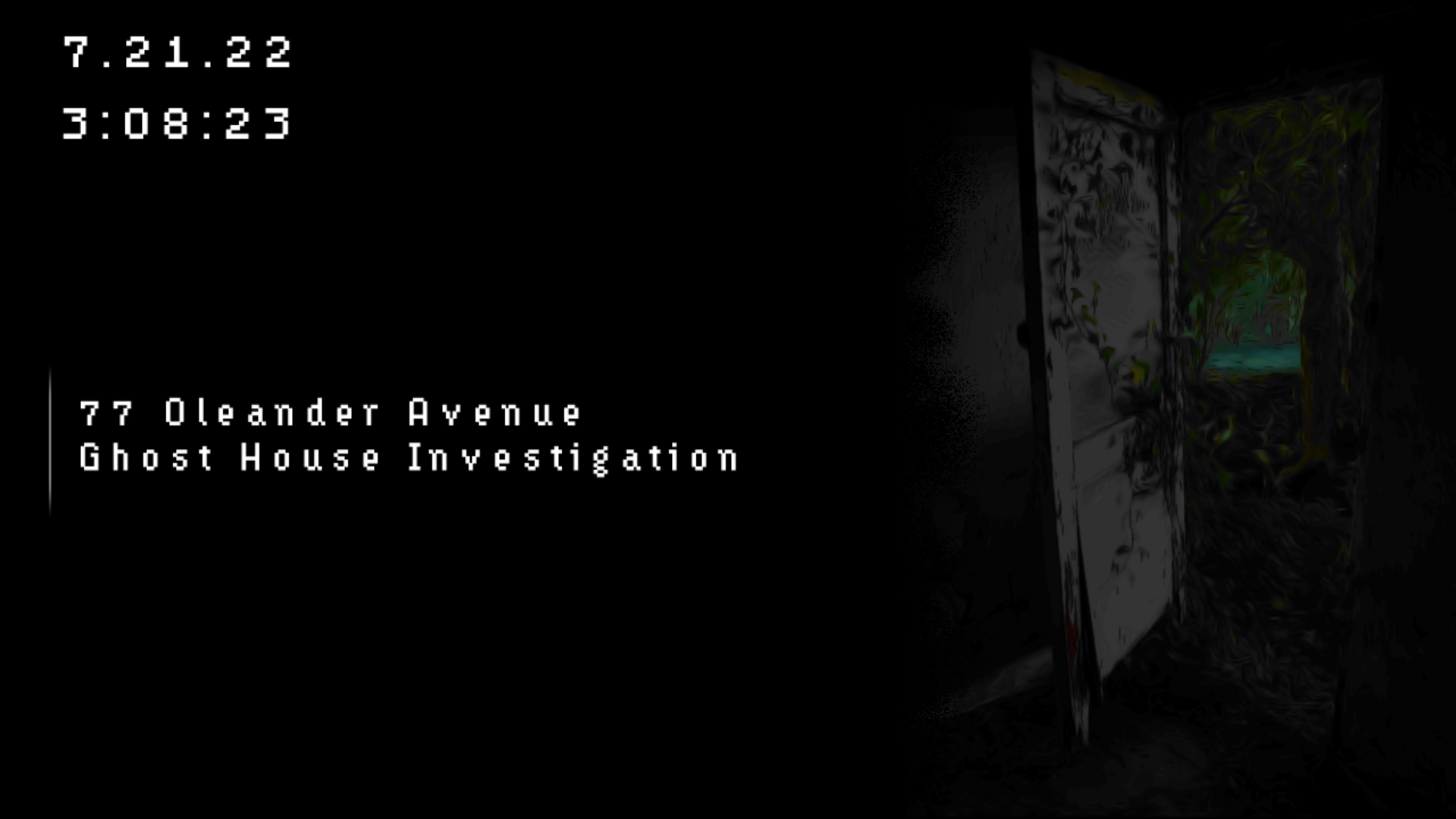
Slay the Princess Review – The Stab-ley Parable
‘You’re on a path in the woods. And at the end of that path is a cabin. And in the basement of that cabin is a princess. You’re here to slay her. If you don’t, it will be the end of the world.’ So opens Slay the Princess, a branching-path visual novel from married indie duo Black Tabby Games. Equal parts horror, comedy, romance and philosophical discourse, Slay the Princess uses its monarch-murdering premise to create a memorable – if often mind-boggling – emotional rollercoaster ride of an experience.

It’s difficult to talk about Slay the Princess’ story without getting into spoiler territory, to the extent that it’s almost worth not knowing anything aside from the initial setup. You start in the woods with a Narrator explaining the situation, and from there things are up to you. You can ask questions, turn around and leave, or just march straight to the cabin and confront the Princess. Whatever you choose, you’ll likely find that things don’t tend to be as permanent as you’d have thought. Events rapidly take an off-ramp to Weirdsville from there, so I’ll leave the rest of it for you to discover.

Humour is where Slay the Princess undoubtedly shines best. Most of this comes through some of the dialogue options you’re presented with, as well as the various internal voices you’ll hear rattling around inside your protagonist’s head. All voiced by Jonathan Sims, these personas spend most of their time either commenting on your choices, or else bickering with the Narrator (also voiced by Sims), who often serves as something of the straight man to their antics. Sims was aptly cast here, with his deadpan British delivery and range of characterful alter-egos nailing the scripts’ well-written laughs.

The other major voiced role is the Princess herself, voiced by Nichole Goodnight. While I warmed more to Sims than her, this probably comes down to personal preference. I’m from Blighty myself, for one thing, although it does seem slightly strange to cast an American to play royalty, given the game’s quasi-medieval dark fairy tale trappings. It’s also perhaps a lopsided comparison, since the comedy falls nearly wholly on the Narrator & Co’s side, while Goodnight’s Princess has to take on most of the game’s horror elements and emotional heavy lifting. Kudos should be given here, as the Princess turns out to be a (very) varied role, and Goodnight manages to make the heartfelt moments count when she needs to.

On the presentation front, Slay the Princess manages somehow to be both unique whilst also being merely serviceable, if that makes any sense. Each frame is hand drawn, using a limited colour palette that sticks mostly to greys and washed-out sepia, with occasional splashes of blood red or viscera yellow for gory emphasis. While the characters and environments aren’t as comprehensively rendered as those in Scarlet Hollow – Black Tabby Games’ other upcoming visual novel – the aesthetic creativity and general hand-crafted feeling of the visuals still manages to convey a sense of indie passion. The game manages to deliver the creep-factor, too, and while Slay the Princess may not be outright scary, a large part of what kept pushing me onward was the prospect of seeing what warped imagery the game was going to chuck at me next.

Speaking of twisted stuff, one thing those going in completely blind may not be prepared for is the undertone of kink Slay the Princess has got going on. Spoiler alerts here, but in my playthroughs I came across – amongst others – a feisty tomboy demon woman, a straight-up catgirl, and a towering ‘step on me big lady’ queen shaming the player for being a pathetic little worm. It’s not quite at the level where you feel like the creators were playing pocket billiards during development, but I’m damn certain they had at least one eye on the sexy cosplayer and Rule 34-er crowd. And you know that thing in works of horror (think Clive Barker) where the violence has such sexual connotations that one might as well be the other? Well, there’s quite a bit of that too. Having said that, this is a visual novel we’re talking about, and getting kindle for the bindle is practically par for the course in this genre.

If I had one major criticism of Slay the Princess, it’d have to be the way the overarching story pans out. Without wishing to spoil things, the game gets bit too fond of waxing philosophical at times, to the point that it lost me on some of the major reveals. I’m not entirely sure how much of the game’s justifications for the setup add up, and how much of it gets lost in the woods dallying around with concepts like Existence, Being, Free Will, Cartesian doubt, and the rest of it. At times it felt like Slay the Princess wanted to be at once an exercise in Cosmic Horror, a Doki-Doki Literature Club/ Stanley Parable-esque commentary on the nature of player choice, and a work of theological speculation, in an assumption that talking about abstract, bloodless ideas equates to profundity. It doesn’t, at least not in my book, and I’d rather have had the game focus on developing a more straightforward narrative instead of reading like something out of an Existentialism 101 textbook. Black Tabby have proved with Scarlet Hollow that they can write sympathetic characters, and while the ending I got was pretty decent, I still felt that if the personal interactions had taken more of a front seat to the wordy-thinky stuff it could have been a real tear-jerker. (And yes, I did get the good ending, before anyone levels that accusation at me.)

If you want horror, humour, romance, philosophy, and a neat little indie game that encompasses all four, then Slay the Princess may be the game for you this Halloween. A single playthrough will clock in at roughly three to four hours, while you’ll get about 20 in multiple playthroughs if you’re trying to see everything. You can grab the game or its free demo over on Steam or GOG.com.




